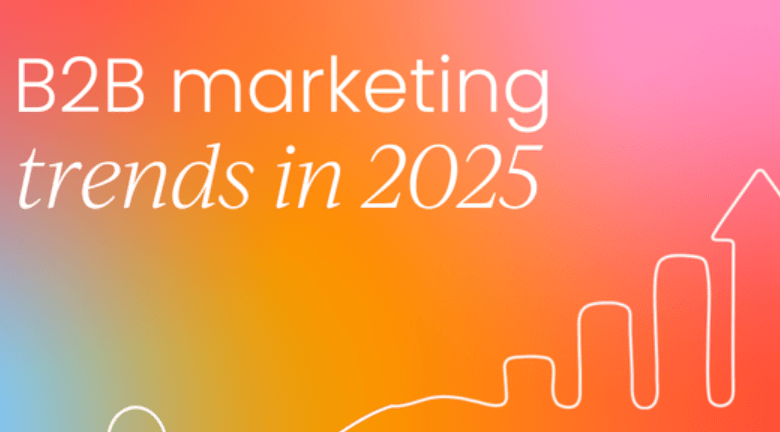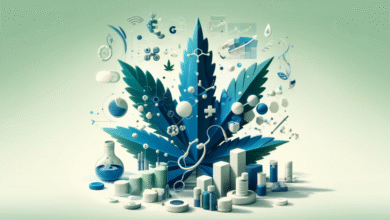What B2B Performance Marketing Looks Like in 2025

As the business-to-business (B2B) marketing landscape evolves, performance marketing has solidified its position as a cornerstone for driving measurable results in 2025. Defined by its focus on data-driven strategies and quantifiable outcomes, B2B performance marketing leverages advanced technologies, hyper-targeted campaigns, and seamless integrations to fuel sales pipelines and maximize return on investment (ROI). In a world shaped by artificial intelligence (AI), privacy regulations, and shifting buyer expectations, performance marketing is more dynamic than ever. This article explores the defining characteristics, strategies, and trends shaping B2B performance marketing in 2025, offering a glimpse into its transformative impact on business growth.
Embracing AI-Driven Personalization
In 2025, AI is at the heart of B2B performance marketing, enabling unprecedented levels of personalization. Machine learning algorithms analyze vast datasets—spanning CRM records, behavioral tracking, and third-party insights—to predict prospect behavior and deliver tailored content. This allows marketers to craft campaigns that resonate with specific decision-makers, from C-suite executives to department heads, at every stage of the buyer’s journey.
For instance, a company selling enterprise software might use AI to identify IT directors researching cloud migration, serving personalized ads highlighting scalability benefits. These ads could dynamically adjust based on real-time interactions, such as a prospect’s recent website visit or content download. By leveraging AI, marketers achieve hyper-targeted engagement, driving higher conversion rates and ensuring campaigns remain relevant in a competitive market.
Navigating a Privacy-First Ecosystem
Data privacy regulations, such as GDPR and CCPA, have reshaped B2B performance marketing in 2025, emphasizing ethical data use and transparency. Marketers must balance precision targeting with compliance, using anonymized data and consent-driven practices to maintain trust. Advanced platforms now integrate robust consent management systems, ensuring ads adhere to regional regulations while delivering value.
For example, a B2B marketer targeting European clients might rely on first-party data from CRM systems, supplemented by compliant third-party sources, to reach compliance officers without violating GDPR. Transparency, such as clear opt-out options, fosters trust with prospects who value privacy, enhancing brand credibility. This privacy-first approach ensures campaigns are both effective and ethically sound, supporting long-term success.
Leveraging Multi-Channel Orchestration
B2B buyers in 2025 engage with brands across an expanding array of touchpoints—LinkedIn, connected TV (CTV), mobile apps, and virtual events—requiring a cohesive multi-channel strategy. Performance marketing orchestrates these channels through integrated platforms, ensuring consistent messaging and seamless tracking. This approach maximizes reach while aligning with the complex, multi-stakeholder nature of B2B decision-making.
For instance, a consulting firm targeting manufacturing companies might use LinkedIn to promote a thought leadership webinar, retarget non-registrants with CTV ads, and follow up with personalized emails. Marketing automation tools track interactions across channels, segmenting prospects based on engagement to deliver relevant content. This orchestrated approach drives measurable outcomes, such as increased lead volume or faster pipeline progression.
Scaling with Programmatic Precision
Programmatic advertising remains a cornerstone of B2B performance marketing in 2025, leveraging real-time bidding (RTB) and demand-side platforms (DSPs) to deliver ads with pinpoint accuracy. Enhanced by AI, programmatic platforms optimize budget allocation, directing resources to high-performing channels and audiences. This scalability allows marketers to expand campaigns across markets without sacrificing precision.
For example, a logistics software provider might use programmatic ads to target supply chain managers on industry websites, adjusting bids based on click-through rates or conversions. Advanced targeting capabilities, such as intent-based data, ensure ads reach prospects actively researching solutions. By automating and optimizing ad placement, programmatic advertising drives measurable results, from lead generation to revenue growth, with unparalleled efficiency.
Prioritizing Intent-Driven Content
Content in 2025 is more action-oriented than ever, designed to prompt specific responses that align with performance marketing goals. B2B campaigns focus on delivering value-driven content that addresses the unique pain points of decision-makers, encouraging actions like downloading a resource, registering for a demo, or requesting a proposal. This content is tailored to the buyer’s journey, from awareness to decision.
For instance, a cybersecurity firm might offer a compliance checklist to attract compliance officers, followed by a case study showcasing data protection success for those in the consideration stage. Interactive formats, such as virtual demos or ROI calculators, further engage prospects, driving measurable actions. By aligning content with intent, marketers ensure campaigns contribute directly to pipeline growth and conversions.
Integrating with the B2B Sales Funnel
A high-performing B2B performance marketing strategy in 2025 seamlessly integrates with the sales funnel, guiding prospects from awareness to purchase. Early-stage campaigns might focus on generating MQLs through educational content, such as webinars or eBooks, while mid-funnel efforts use retargeting ads to re-engage prospects with demo invitations. Late-stage campaigns deliver proposals or trials to close deals.
For example, a prospect who engages with a programmatic ad for a cloud solution might receive a follow-up email with a case study, reinforcing the brand’s value proposition. CRM platforms track these interactions, ensuring a cohesive journey. This integration drives measurable outcomes, such as increased SQLs or shortened sales cycles, by aligning marketing efforts with sales goals.
Fostering Sales-Marketing Synergy
The complexity of B2B sales, with multiple stakeholders and extended cycles, demands tight alignment between sales and marketing teams. In 2025, performance marketing thrives on shared goals, metrics, and data, ensuring a seamless handoff from MQLs to SQLs. Regular collaboration, facilitated by shared CRM platforms, allows teams to review lead quality, pipeline progression, and feedback.
For instance, marketing might prioritize leads who attended a product webinar, while sales focuses on those requesting consultations. Weekly syncs or shared dashboards ensure alignment, identifying gaps like unqualified leads or stalled prospects. This synergy maximizes conversion rates, ensuring marketing efforts translate into measurable sales outcomes and support scalable growth.
Adapting to Emerging Technologies
Emerging technologies, such as 5G and generative AI, are reshaping B2B performance marketing in 2025. 5G enables faster, richer ad formats, like immersive video demos, enhancing engagement on mobile and CTV platforms. Generative AI streamlines content creation, producing tailored ad copy or visuals for specific audience segments, saving time and resources.
For example, a B2B tech firm might use generative AI to create personalized video ads for IT directors, showcasing real-time analytics capabilities, delivered via 5G for seamless playback. These technologies enhance campaign scalability, allowing marketers to reach broader audiences with richer experiences while maintaining precision and efficiency.
Read also: Tech That Will Shape 2025 and Beyond
Measuring Success with Advanced Analytics
Analytics are the backbone of B2B performance marketing, providing real-time insights into campaign performance. In 2025, advanced attribution models link ad interactions to sales outcomes, offering a clear picture of ROI. Key performance indicators (KPIs), such as cost per lead, conversion rates, and pipeline velocity, guide optimization efforts, identifying high-performing tactics and areas for improvement.
For instance, if a campaign targeting HR directors shows high impressions but low conversions, marketers might refine ad messaging to better address employee engagement challenges. A/B testing ad formats or landing pages further enhances performance. By leveraging analytics, marketers ensure campaigns remain agile, delivering measurable results as they scale.
Building Long-Term Value Through Relationships
Performance marketing in 2025 extends beyond immediate conversions to fostering long-term client relationships that drive renewals, upsells, and referrals. Post-conversion strategies, such as comprehensive onboarding and ongoing support, ensure client satisfaction and loyalty. For example, a software provider might offer dedicated training sessions, followed by quarterly reviews to identify new opportunities.
Client feedback, gathered through surveys or CRM data, informs campaign refinements, ensuring ongoing relevance. By prioritizing long-term value, marketers create a cycle of advocacy and repeat business, reinforcing the measurable impact of performance marketing and supporting sustainable growth.
Shaping the Future of B2B Engagement
B2B performance marketing in 2025 is a dynamic, data-driven discipline that combines AI, programmatic precision, and multi-channel orchestration to drive measurable results. By embracing personalization, navigating privacy regulations, and integrating with the sales funnel, marketers can engage decision-makers with tailored campaigns that deliver tangible outcomes. Emerging technologies and advanced analytics further enhance scalability, while a focus on relationships ensures long-term success. As the B2B landscape continues to evolve, performance marketing remains a powerful engine for driving pipeline growth, building trust, and achieving sustainable results in a competitive market.




